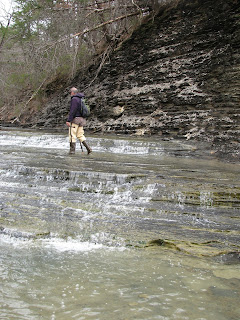For More Jewelry Tips Please Visit Us Online At -
Now that I have that tune stuck in your head, let’s switch
gears from 60’s folk music to swinging an actual hammer. One of the most satisfying processes in
creating jewelry is using a hammer to add texture and dimension to a piece.
Taking out your frustrations on an innocent piece of metal can truly be
gratifying. Many wire artists, however, shy away from wielding a hammer because
it seems too intimidating. Many say, “What if I do it wrong?” or “what if I
destroy my work?”. Those are some valid
fears. You can take all of the mystery and apprehension out of the equation by
arming yourself with a lot of knowledge and a little guts.
Let’s first get up close and personal with the hammer. The
hammer most often used in creating wire jewelry is a chasing hammer. When used
in metal working this hammer is used with chasing tools to embed grooves or
lines in metal. It’s also used in setting rivets, stamping, and other texturing
processes. For the wire artist it’s used to flatten and texture wire. Looking
at the tool you’ll notice that the head of the hammer has two sides, one that’s
wide and somewhat flat, the other looks like a small knob. In brief, the wide
flat side is used to shape and flatten wire. The small ball peen side is used
to add golf ball-like texture to the surface of flattened wire. All chasing
hammers look similar with a little variation in head size and weight. The
weight of chasing hammers can range from 2 ½ to 6 ounces. Choosing a chasing
hammer is a matter of personal preference. For the wire artists needs, a 3 or 4
ounce hammer will accomplish most jobs.
To successfully flatten and texture wire it requires resistance.
To give the needed resistance the metal is placed on a thick piece of polished
steel called a bench block. When the hammer strikes the metal the bench block
causes firm resistance that allows the full power of the hammer to flatten the
metal. Without this resistance the power
of the hammer blow would be ineffective. Bench blocks come in a variety of
sizes from 2 ½ X 2 ½ inch square to 6 x 6 inch square. The bench block that you
choose is entirely up to you.
Before we begin swinging a hammer it’s a good idea to go
over a few points of safety. It’s always
a good idea to protect your eyes so be sure to put on safety glasses before
hammering. It’s also important to avoid hitting your hand with the hammer. To
properly flatten and texture a piece of wire, though, you’ll need to hold it
securely in place. This puts your fingers at risk. So what can you do? It isn’t
necessary to hammer the entire length of wire at the same time. Some of the
wire can hang off the side of the bench block. This gives you
something to hold as you hammer. When one section is complete, turn the wire
around and hold the newly hammered section while finishing the process.
Keep Your Fingers Out of the Way
Now that we have a basic understanding of the hammer, bench
block and safety rules we can have a look at using the hammer. We’ll begin with
flattening wire. Place a 3 inch (7 cm) piece of scrap 18 gauge wire on your
bench block – a larger gauge can be used. Using a chasing hammer, strike one
end of the metal until it flattens (Picture 1).
Picture 1
Continue this action down the
length of the wire (Picture 2). You’ll notice that the flattened piece of wire
isn’t perfectly square. As you hammered, the metal was stretched in several
directions causing odd lumps on the sides of the wire.
Picture 2
This is easy to fix. Set
the wire on its side and tap it with your hammer to square it back up (Picture 3).
Picture 3
Now that the wire’s flat we can add some texture to it. Using
the flattened wire, place it back on your bench block. Turn your
chasing hammer around so the ball peen end is pointing towards your work
surface. Now tap on the flattened wire in a random pattern with the ball peen
head (Picture 4). It’s good to tap a little then review your work. Continue
tapping the metal until you’re satisfied with the results.
Notice the pattern
that it gives the wire. Those little divots will reflect the light in such a
way that it gives the piece a sparkle.
Finished
See that wasn’t as bad as you thought. Using a chasing
hammer isn’t scary or mysterious if you understand a little about it. Adding
texture in this way will not only add depth to your work, it’ll also give life
to your creativity.
'til Next Week
For More Jewelry Tips Please Visit Us Online At -



































